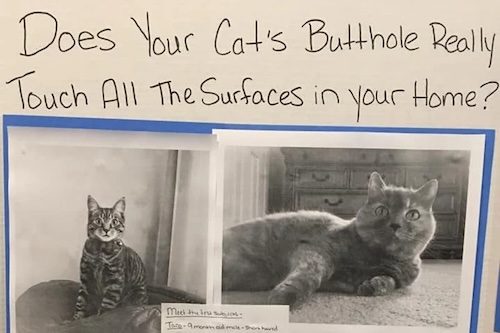It’s that time of year when we start spending more time outdoors, and when the mosquitos are on the prowl for your blood. Colin Purrington bought these simple devices that are non-toxic but promise to kill mosquitos around your yard — not that I’m at all interested, I like having spider food living around my home — but I can understand not wanting biting, flying insects disturbing your parties. It also seems ecologically safe, since all it is is a tube containing a yeast solution (to produce CO2, a mosquito attractant) and boric acid, to kill insects that drink from it.
Only problem is that they don’t work. They produce very little CO2, mosquitos don’t take the bait, and if they crawl inside the tube, they don’t drink, they just fly out again. And it’ll cost you $50 for a box of 4 tubes! They really shouldn’t have let these devices fall into the hands of a scientist who can think quantitatively and who can devise easy tests of their efficacy.
Oh, another little problem with Spartan Pro: if you write a negative review of their product, they will sue you. It’s a stupid SLAPP suit that was eventually defeated, at a cost of $90,000 to Purrington. No, he didn’t get his legal costs back.
SLAPP suits are evil, and anyone or any compony that deploys them is evil, too.
I’m amazed at all the people leaving comments on Purrington’s site to claim that they actually do work. I don’t know whether they’re gullible, or Spartan Mosquito is paying puppets to leave phony testimonials, or my most charitable interpretation, they’re seeing the effects of general insect decline and attributing it to the magic cylinder they hung from a tree. I’m seeing fewer insects year by year in my area, so this might be a good time to be selling ineffective insect traps and letting your reputation thrive on ecological decline.








